Cycle 3: Grand Finale
Posted: April 29, 2025 Filed under: Uncategorized Leave a comment »For the final project, I decided to do some polishing on my Cycle 2 project and then try to add to it to create a more complete experience. During feedback for Cycle 2, a few people felt the project could be part of a longer set, so I decided to try to figure out where that set might go. This allowed me to keep playing with some of the actors I had been using before, but also to try to see how I could alter the experience in various ways to keep it interesting. I, again, spent less time than I did in the beginning of the semester looking for assets. I think I knew what I was looking for more quickly than I did in the beginning, and I knew the vibe I wanted to maintain from the last cycle. While I, for the second cycle in a row, neglected to actually track my time, a decent portion of it was spent trying to explore some of the effects and actors I hadn’t used before that could alter the visuals of what I was doing in smaller ways, by swapping out one actor for another. As always, a great deal of time was spent adjusting and fine-tuning various aspects of the experience. Unlike in the past, far, far too much time was spent trying to recover from system crashes, waiting for my computer to unfreeze, and generally crossing my fingers that my computer will make it through a single run of the project without freezing up. Chances seem slim.
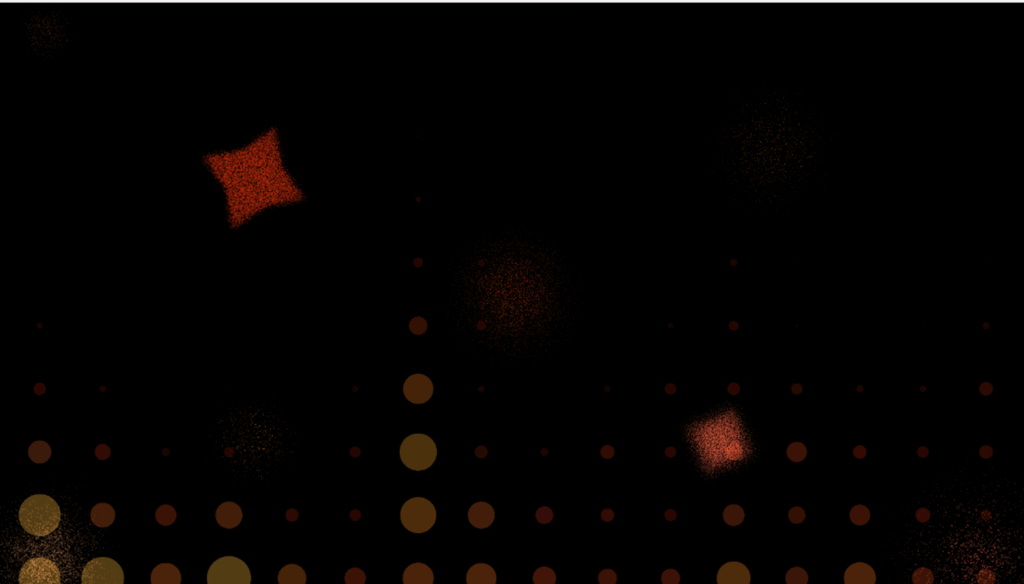
Cleaned Up and Refined Embers

Flame Set-up
I again worked with the Luminance Key, Calc Brightness, Inside Range, and Sequential Triggers actors. Sequential Triggers, in particular, are a favorite because I like tying “cues” together and then being able to reset the experience without anyone needing to touch a button. Throughout the class, I’ve been interested in making experiences that cycle and don’t have an end, things that can be entered at any time, really, and can be abandoned at any point. To me, this most closely mimics the way I’ve encountered experiences in the wild. Think of any museum video, for instance. They run on a never-ending loop, and it’s up to the viewer to decide to wait until the beginning or just watch through until they return to where they entered the film. For me, I want something that people can come back to and that isn’t strictly tied to a start and stop. I want people to be able to play at will, wait for a sequence they particularly enjoyed to come back around, leave after a few cycles, etc. I am still using TouchDesigner and a depth sensor to explore these ideas. This time around, I also the TT Edge Effect, Colorizer, and Sound Level Watcher ++ to the mix. I was conservative with the Sound Level Watcher because my system was already getting overloaded, at that point, and while I wanted to incorporate it more, I wanted to err on the side of actually being able to run my show.
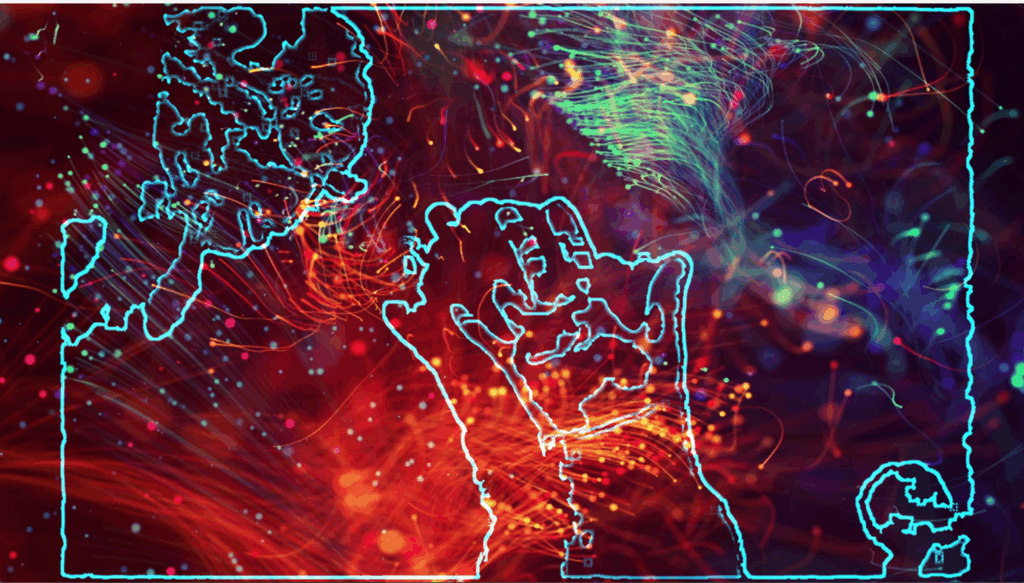
“Neuron” Visuals
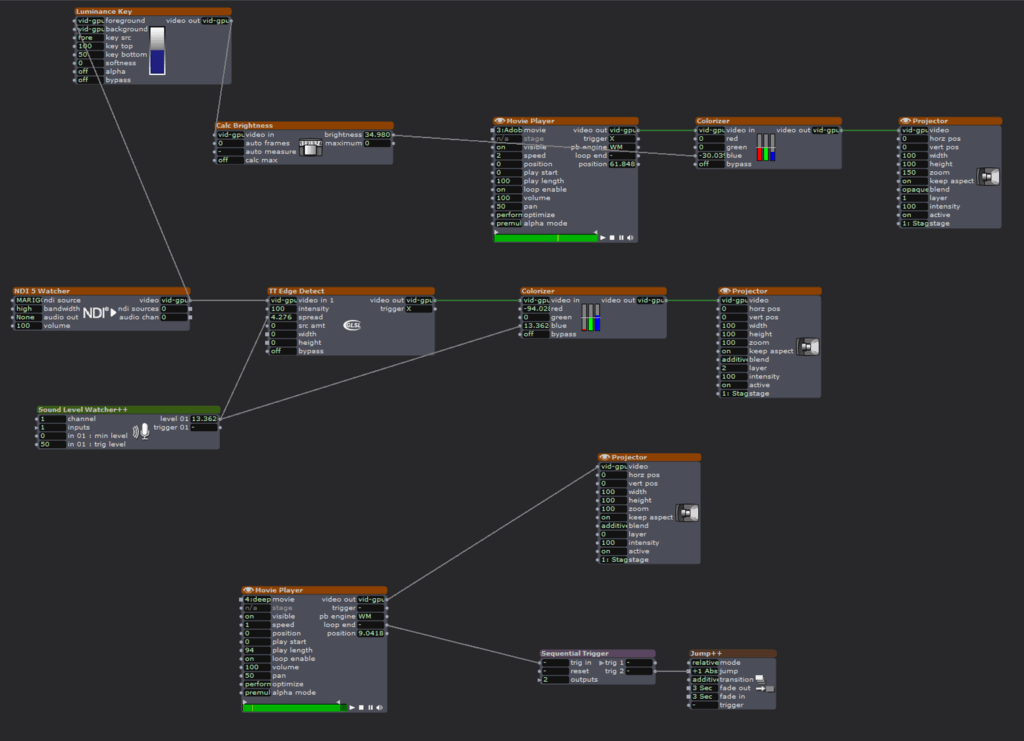
“Neuron” Stage Set-up
The main challenge I faced this time was that my computer is starting to protest, greatly, and Isadora decided she had had enough. I ran into errors a number of times, and while I didn’t lose a significant amount of work, I did lose some, and the time I lost to the program crashing, restarting my computer in hopes it would help, and various other troubleshooting attempts was not insignificant. In retrospect, I should have found ways to scale back my project so my computer could run it smoothly, but it everything was going fine until it very much wasn’t. I removed a few visual touches and pieces to try to get the last scene, in particular, to work, and I’m hoping that will be enough.
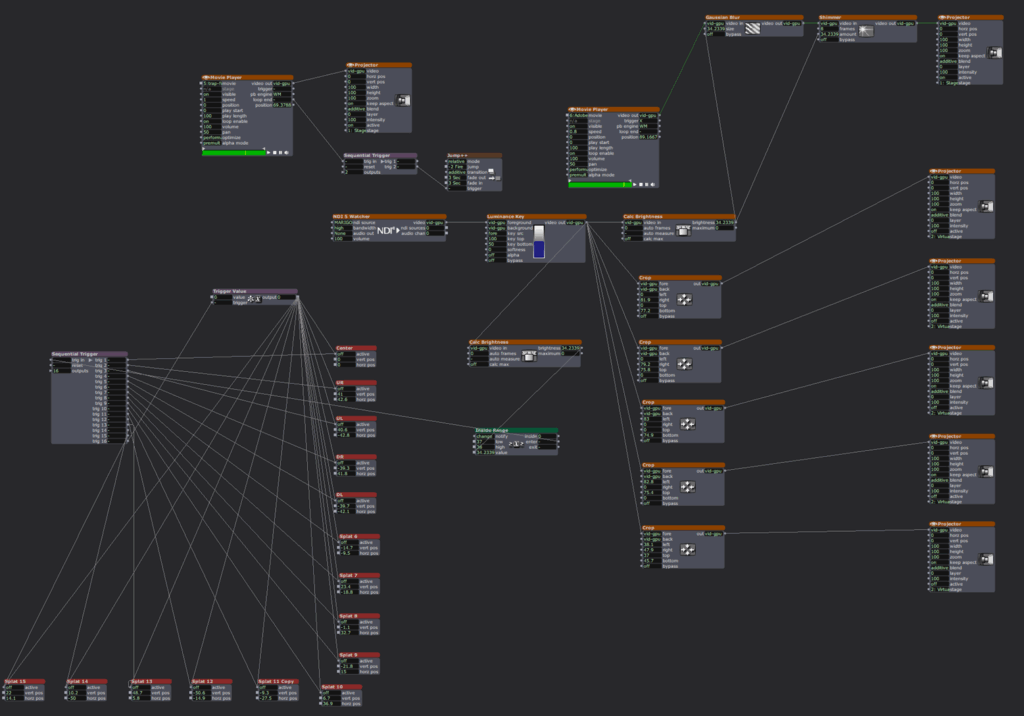
Initial Set-up of Final Scene
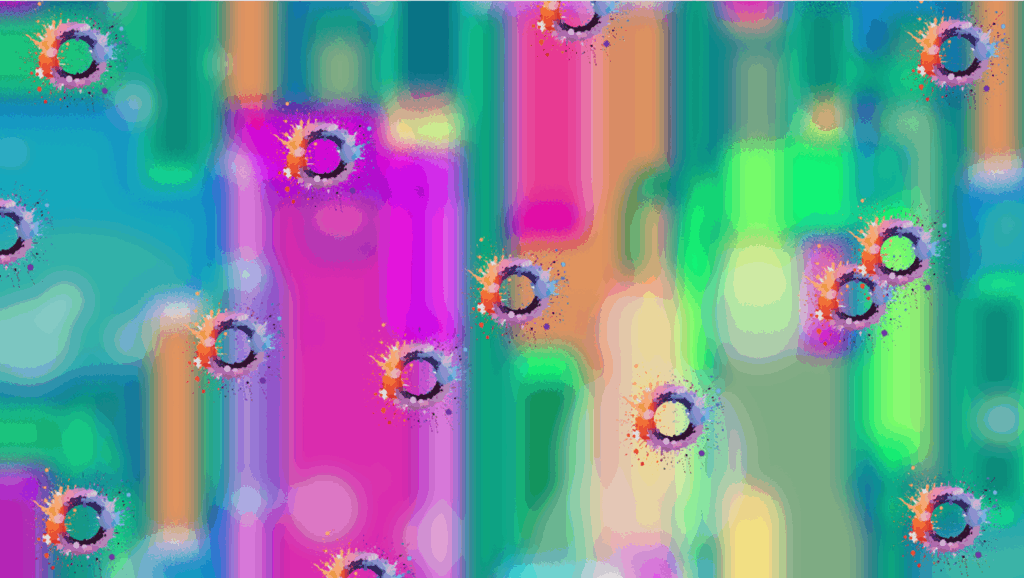
Final Scene Visuals before Edits
For this project, I mostly was focusing on expanding on my Cycle 2 project to make a longer experience. I don’t know that the additional scenes ended up being as developed as the first, but I think they still added to the experience as a whole. I worked hard to incorporate music to make a more holistic experience, as well. As stated above, I couldn’t do so to the level I would have liked, but I hope the impulse toward that is recognized and appreciated, such as it is. I also wanted to address some of the visual notes I received in the last cycle, which I was able to do with relative ease. I tried to find new ways for people to interact with the project in the added scenes, but I feel they are a little lacking in the interactive department. Ultimately, it was a combination of struggling with Isadora logic, still, and a lack of ideas. I still feel my creativity in these projects is somewhat stymied by my beginner status with media. I can’t quite get to the really creative exploration, still, because I’m working on figuring out how to make things work and look somewhat finished. I’m satisfied with what I’ve been able to put together, I just wish I were able to create at a higher level (it’s an unrealistic wish, but a wish, nonetheless).
If I were to continue to work on this project, I would work to increase the interactivity in each scene and make things more sound reactive. I would continue to look for different ways people could play with the scenes. I think there’s a world where something like this is maybe 5 or 6 scenes long, and it runs 20-30 minutes. I think this one runs maybe 15 minutes with three scenes, which maybe would work well with more interactivity woven in. Regardless, I’m happy with what I managed to put together and all I managed to cram into my noggin in one semester.
ADDENDUM: I ended up cutting the third scene of the experience before I presented it. By the time I removed enough of the effects to get it to run smoothly, it felt too derivative, and I decided to stick with the two scenes that were working and “complete.” If I had more time, I would work on the getting the third scene to a simpler patch that was still engaging.